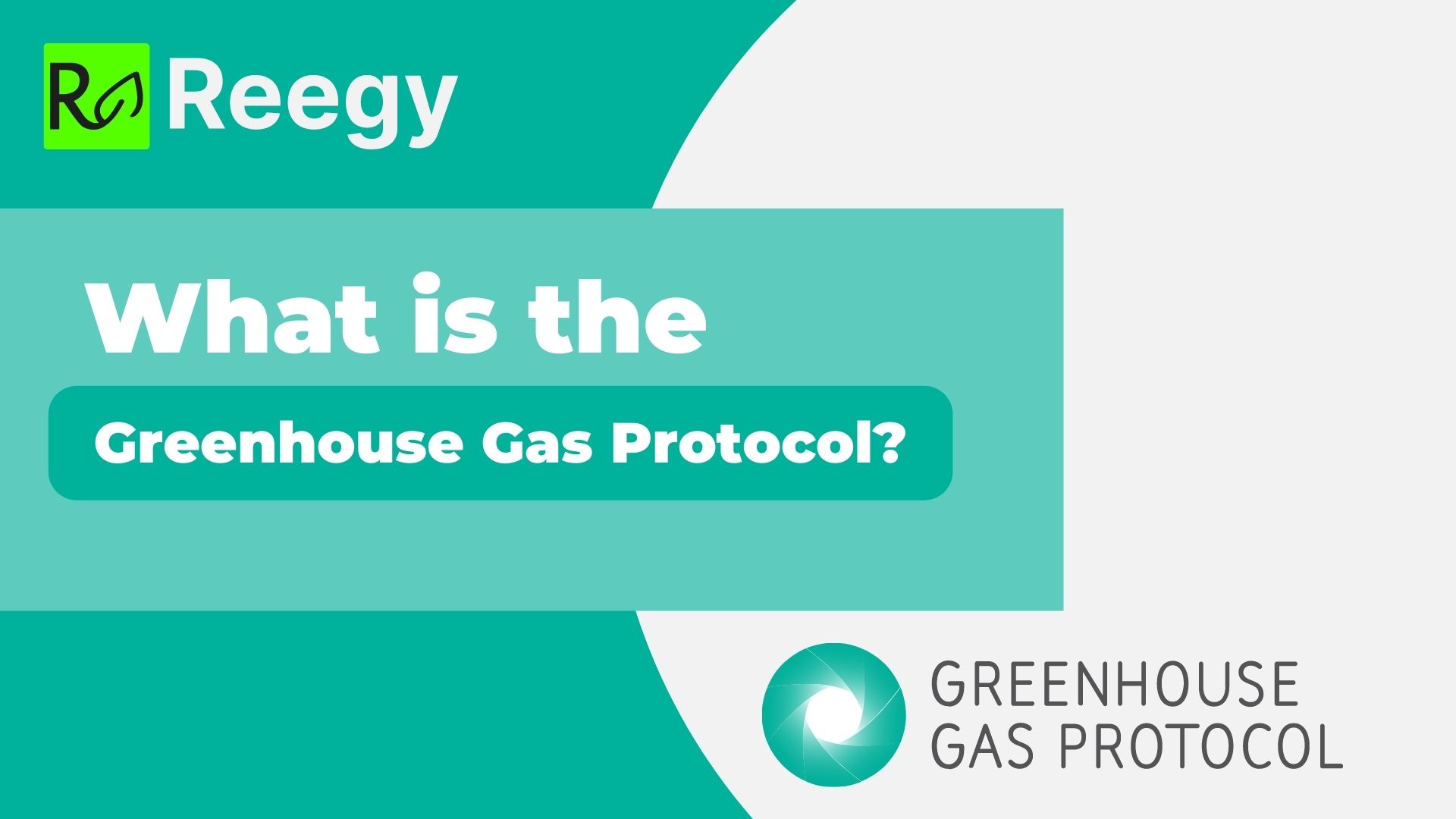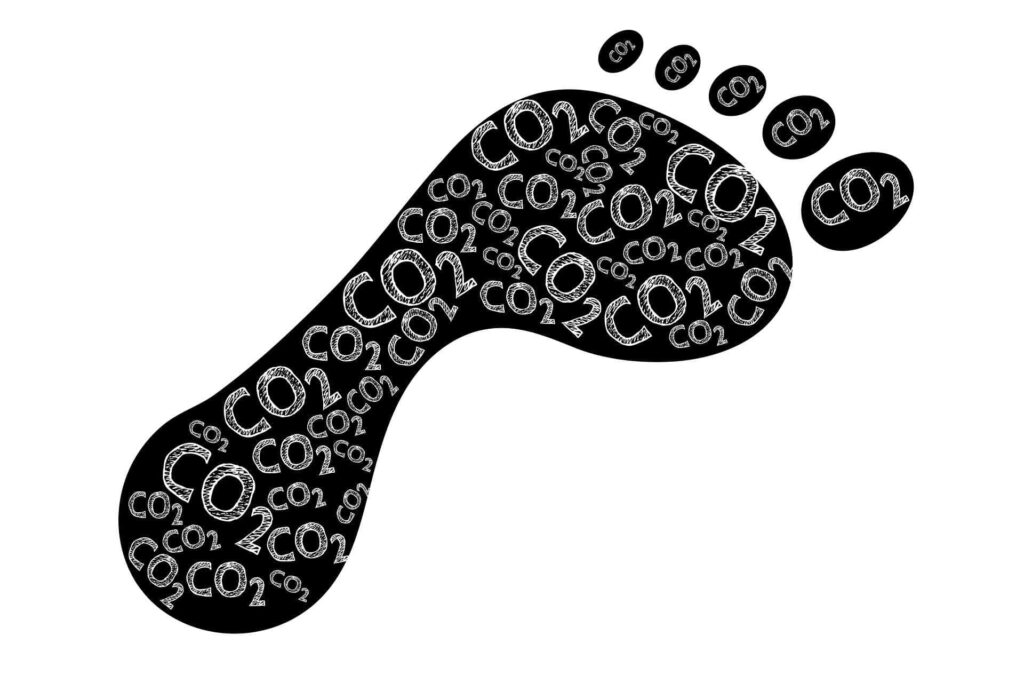
The Greenhouse Gas Protocol is the globally accepted standard for carbon accounting and disclosure of greenhouse gas (GHG) emissions. Many ESG reporting frameworks are based on it.
Its ultimate goal is to help organizations reduce their carbon footprint and greenhouse gas emissions to lower the impact of human-caused climate change.
Since its first version in 2004, it has seen widespread adoption and today, more than 90% of Fortune 500 companies use it directly or indirectly to disclose their CO2 emissions.
In this guide you will learn:
- What is the GHG Protocol?
- Why do we use it?
- How to apply the GHG Protocol principles to our ESG actions?
- Why you should use ESG & carbon accounting software to make your life easier
What is the GHG Protocol?
The Greenhouse Gas Protocol (GHGP) is a private transnational collection of carbon accounting reporting standards for companies and other organizations to help prepare corporate-level GHG emissions inventories. It comprises a number of standards for general reporting, offsetting projects, cities, as well as each of the scope 1,2, and 3 emissions. It was first published in 2001 by World Resources Institute (WRI) and the World Business Council for Sustainable Development (WBCSD).
As the name suggests, the GHG Protocol includes a number of requirements and guidelines for companies and other organizations such as NGOs or governments on how to set up greenhouse gas emissions inventories.
They can be used as a framework to measure, categorize, and report any GHG emissions, however, businesses are free to choose how they follow these principles.
It was also the first to define Scopes 1, 2, and 3 to categorize different types of emissions and propose the commonly used consolidation approaches in use. We will look more into the contents of the GHG protocol below.
Numerous other carbon accounting standards build on top of it, for example, ISO 14064, GRI, and national ones.

Which greenhouse gases are covered by the GHG Protocol?
The GHG Protocol includes emissions from the major 7 greenhouse gases according to the Kyoto Protocol – Carbon Dioxide (CO2), Methane (CH4), Nitrous Oxide (N2O), Hydrofluorocarbons (HFCs), Perfluorocarbons (PFCs), Sulphur Hexafluoride (SF6), and Nitrogen trifluoride (SF3).
These greenhouse gases are then turned into carbon equivalents, written as CO2e, as a common unit of emissions.
Of course, businesses are free to report other types of emissions as part of their reporting or disclose each GHG individually instead of using carbon equivalents.
Disclose all emissions
If your company has other types of significant climate-impacting emissions, disclose them as well. The goal of carbon accounting and ESG reports is to be as accurate as possible about your impact on the environment
Standards included in the GHG Protocol
Since its first publication, the GHG Protocol has been revised in 2004 and received a number of additional resources and standards.
These include:
- Corporate Accounting and Reporting Standard
- Community-Scale Greenhouse Gas Emission Inventories (GPC)
- Mitigation Goal Standard
- Corporate Value Chain (Scope 3) Standard
- Protocol Policy and Action Standard
- Product Standard
- Project Accounting Standard
All of these standards are available on the GHGP website.
GHG Protocol Standards
Let’s look at some of the contents of the GHG Protocol and its core principles:
GHG Accounting and Reporting Principles
Similar to generally accepted accounting principles (GAAP) in financial accounting, the GHG Protocol standards are based on five principles:
Relevance – A company’s GHG inventory should appropriately reflect its GHG emissions and be relevant for those the report is aimed at.
Completeness – All GHG emissions, sources, and activities should be included in the emissions inventory.
Consistency – Be consistent in the way you track, measure, and analyze your emissions data. This also applies to potential changes you make in subsequent reports which impact those before.
Transparency – Be transparent about your measuring process and disclose any assumptions you make in case actual data is missing.
Accuracy – A company’s GHG report should be an accurate representation of its emissions inventory. Any uncertainties, for example, due to a lack of reliable data, should be reduced as much as possible.
Organizational Boundaries
When introducing GHG reporting standards, you must first define the organizational boundaries, a base year for the emissions tracking, and a reporting period.
The GHG Protocol proposes three choices for the consolidation approach:
- Equity share approach
- Control Approach
- Financial Control
- Operational Control
Under the equity share approach, a company accounts for GHG emissions based on its equity ownership in each of its operations. Under the control approach, it accounts for 100% of an operation’s emissions, either based on financial or operational control over it.
Operations may refer to factories, processes, and events, but also employees, connected supplier emissions, and other indirect sources of GHG emissions.
Emission Scopes
We divide the total carbon footprint of a company into three main categories, or scopes:
Scope 1 – All direct emissions from operations within the chosen consolidation approach.
The main activities in scope 1 include:
- Generation of electricity, heat, or steam
- Physical or chemical processing
- Transportation of materials, products, waste, and employees
- Fugitive Emissions
Scope 2 – Indirect emissions from purchased electricity, heat, or steam
Disclosure of scope 1 and 2 emissions are mandatory according to the GHG Protocol.
Scope 3 – Other indirect GHG emissions
Scope 3 is optional (yet), however, in many cases, this accounts for the majority of a company’s emissions and should be included.
There are a number of different categories within scope 3, which include upstream and downstream emissions from customers, suppliers, transportation, travel, and more.
To learn more about the different scopes of GHG emissions, read our guide to scope 1, 2, and 3 emissions in carbon accounting.
Your scope 3 is somebody else’s scope 1 & 2
All indirect emissions a company discloses are automatically somebody else’s (suppliers, customers, employees) direct emissions. A carbon footprint management software like Reegy can help you make data collection much faster.
Factor-based emission calculations
Instead of measuring each emission directly, the GHG Protocol proposes the use of emission factors based on overall consumption.
For each type of fuel or activity data, different emission factors for each GHG are applied and multiplied to arrive at the overall emissions.
The accuracy of this approach relies heavily on the quality of the emission factors and how much work is put into the accounting process.
Reegy helps companies automatically calculate all their emissions precisely and uses up-to-date data from hundreds of databases and emission factors.

Which GHG reporting standards apply to my organization?
Companies and organizations are free to choose their GHG reporting standards, consolidation approaches, system boundaries, and how they track their emissions. The general Corporate Accounting and Reporting Standard can be used as a base for setting up corporate-level GHG emissions inventories while the remaining ones are more sector or use-case specific.
If you want to figure out which ones apply specifically to your organization, start with the general Corporate Accounting and Reporting Standard, as well as the Corporate Value Chain (Scope 3) Standard. The Product Standard can be used to determine specific emissions of each of your products.
This should give you a good foundation in understanding what you need to do to disclose your carbon emissions to regulators, stakeholders, and the public.
Keep in mind though, many companies don’t use the GHG Protocol directly, but rather indirectly through standards like GRI, ISO 14064, or national ones.
How can you apply the GHG Protocol to your ESG actions?
Most companies use the GHG Protocol as a framework to either directly or indirectly to create their carbon emissions inventory.
This goes hand in hand with using other reporting standards such as GRI or ISO 14064 which are often more practical than the GHG Protocol itself.
The best way to start using the GHGP for your organization’s GHG inventory is by using a dedicated carbon footprint management or ESG solution like Reegy.
Our software automatically calculates your emissions based on the data you give it and creates the appropriate reports in accordance with applicable regulations.
If you want to do it on your own, start by reading the GHG Protocol accounting standards and use our introductory guide to carbon accounting to create your first CO2 emissions inventory.
Why you should use ESG & carbon accounting software in your company
Creating a GHG emissions inventory, managing the data, calculating your carbon footprint, and accurately disclosing it are a lot of work and very costly.
Manual GHG management is error-prone and highly inefficient. Instead, we recommend you use dedicated ESG management or carbon accounting software.
Most options on the market take the heavy lifting off of your shoulders in regard to carbon accounting and allow you to instead focus on the core aspect of it: Reduce your overall carbon footprint and take climate action!

Check out Reegy and our solutions for companies and organizations of all sizes and begin your journey to Net Zero emissions today!
Reegy is a complete software solution for ESG & Carbon Footprint Management. Our Reegy Eco Hub enables enterprises, financial institutions and governmental organizations to manage their climate action in one central location along the entire value chain. Track, measure, reduce, and offset your carbon emissions, disclose them to regulators, stakeholders, and customers and lead your company to Net Zero on autopilot!